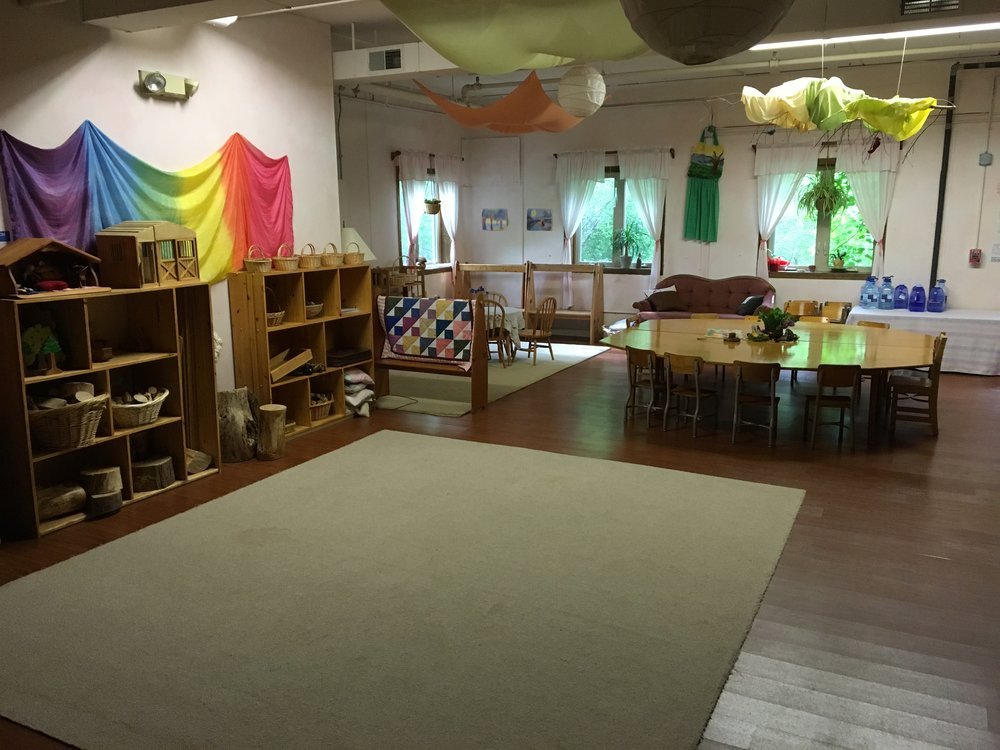On average, 20% of a child’s week is spent in their classroom learning environment. And yet many times these environments are cluttered and sterile—a space replete with distraction rather than calm and peace.
Classrooms shouldn’t be seen as just rooms with desks and books—a child’s sense of motivation, morale and desire to learn is connected to their learning environment. “The aesthetics of learning spaces has an impact on brain function and influences how students feel when they're in school -- as well as how they feel about their school,” said Ramona Persaud.
In Waldorf education, classrooms are designed with deliberation and intentionality. Use of color, comfort, and space are all key factors in creating an educational experience designed around the child that inspires curiosity and embraces free-thinking.
COLOR COMPLIMENTS LEARNING
Steiner indicates the color of the classroom should be connected to the developmental stage of the child. The classrooms of the early grades is typically painted in warmer, rosier colors and slowly these colors will change to cooler and more balanced colors as they continue their educational journey. The technique that is used to apply these colors on the wall is called lazure. This watercolor-like application allows different hues of color to intertwine with each other, creating a feeling of life beyond the walls—not the flat feeling of an industrial painted room.
In the lazure technique, paint is applied with a rhythmical movement using large brushes. The final color is achieved using varied colors applied in several layers, over a white surface.
The second grade classroom at The Waldorf School of DuPage is painted in the lazure technique with a yellow and orange colors. These colors bring a feeling of warmth and peace to the room.
MOVEABLE CLASSROOMS
Traditional classrooms are often created to keep children in a row—confinement rather than a freedom. Waldorf classrooms are designed to be changed or adjusted based on the lesson or the subject matter, allowing children the opportunity of deeper and optimal conditions for learning. “When we keep [children] active, we keep their energy levels up and provide their brains with the oxygen-rich blood needed for highest performance,” said Eric Jensen in his research about movement and learning. Steiner knew that keeping children innovative would require a creative learning environment.
Early childhood learning classrooms are open and spacious to allow for creative playtime, changing classroom layouts and lots of movement!
First graders enjoy a castle play area in their classroom where they can create their own imaginary kingdom and perform class plays.
Third graders are enjoying a main lesson block where they have their desk put in a circle for increased interaction and learning.
Rather than lining up the desks in rows, the fourth graders at The Waldorf School of DUPage enjoy their class set up in a semicircle!
A SENSE OF COMFORT
Waldorf classrooms support the child’s well-being by allowing them to feel relaxed and at ease while enabling them to learn more effectively. In the early childhood classrooms, natural fibers and wooden toys along with a cozy setting offer a comfortable and safe space for children. As children move into their grades journey, the community is built with their classmates and teacher—year after year. This natural progression through the grades has familial tones that reinforce the safety of the child’s learning environment. And since so much time is spent at school, it only makes sense that the setting nurtures the whole child.
These are just a few reasons that Waldorf education is one of the fastest growing alternative education movements in the world. If you would like to learn more about the Waldorf experience and what The Waldorf School of DuPage offers in the western suburbs of Chicago, contact us today







